The Final Countdown
After 15 Years of Producing the Unproducible, It is time to Say Goodbye
Part I: The Beginning of the End
By Roberta Pereira
As the elevator counted off floors, we stared at the numbers in a kind of reverent silence. The doors opened on Manhattan Theatre Club’s offices and I looked over at Studio 42’s Artistic Director, Moritz von Stuelpnagel, incredulously. After years of championing “unproducible” plays in one-night only or workshop engagements in a multitude of venues across New York City, our nonprofit theatre company was about to take a meeting with one of the most prestigious institutions in New York City. MTC had decided to produce Nick Jones’ Important Hats of the Twentieth Century as part of their season. The problem was that Studio 42 had previously announced that we would be producing Important Hats. And now we were about to discuss the possibility of having an association with MTC’s production of the show. We’re the size company that doesn’t even have a regular office, where everybody wears multiple hats—beyond being the board president, I occasionally act as a producer. It was a big moment for us. But what we didn’t know at the time was that this meeting would precipitate a decision by our board of directors to disband Studio 42 at the end of the 2015. And, most importantly, that this decision would be a great thing.
Studio 42 was started in 2001 as many young companies do: by a passionate group of college friends who came together to produce work in New York. (The name comes from the Vassar College suite they lived in.) As time passed, the company grew, and the board sought to sharpen this ambitious spirit into a singular vision. In 2009, they brought Moritz in as artistic director who introduced a new ethos to Studio 42: to expand the imaginative possibilities of American theatre by producing the riskier work of emerging playwrights. With tongues in cheeks, we called this work “unproducible,” a word we ripped from the rejection letters that playwrights receive from theatres all over the country. It seemed to denote scripts in which the potential depravity, experimental structure, or scale of spectacle took them out of consideration for producers who claimed to be in their right minds. But Moritz’s philosophy was that art shouldn’t be level-headed, challenging work doesn’t require expensive solutions, and that audiences were hungry for memorable experiences. In this new phase, Studio 42 actively solicited scripts that were transgressively metatheatrical (Michael Mitnick’s Spacebar: A Broadway Play by Kyle Sugarman), whimsically magical (Bekah Brunstetter’s Miss Lilly Gets Boned), hauntingly erotic (Gregory S. Moss’ Billy Witch), spryly epic (Adam Szymkowicz’s My Base and Scurvy Heart) and perversely satiric (Nick Jones and Rachel Shukert’s The Sporting Life). We produced plays as often as we were able, on a shoestring budget, usually in hyper-limited runs. We dispensed with claims on a new work’s premiere status, in the hope that our involvement would promote future life rather than kill it. And we tried to get in the ears of other companies, encouraging them to engage us in the conversation of why this work was worth the risk. While other Off-Off-Broadway companies wanted their work to look as close to the big boys as possible, we wanted the big boys to consider looking a little more like us.
So why would a company that is, for all intents and purposes, starting to ‘take off’ and be a part of the larger artistic conversation, make the conscious decision to disband?—Roberta Pereira

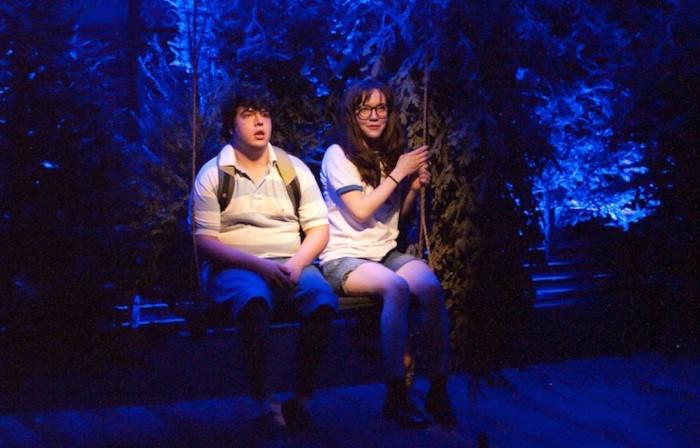
So imagine our surprise when, during our first MTC meeting, we discovered that they didn’t want their production of Important Hats to feel more uptown, but hoped we could bring a downtown element to their institution. This was exactly the kind of effectual engagement we had been looking to provoke, and with a large and reputable producing partner no less. So why would a company that is, for all intents and purposes, starting to “take off” and be a part of the larger artistic conversation, make the conscious decision to disband? After all, most nonprofits close shop because of financial peril. It is much rarer for a nonprofit to make the decision to end its run for mission-related reasons. It began with a conversation about the immediacy of our purpose.
Maybe our mission, as far as we can address it, has been accomplished. Maybe it’s OK to pass the torch. The Studio 42 board voted unanimously that its fifteenth season would be its last.— Moritz von Stuelpnagel
Part II: With Greater Power Comes Greater Responsibility
By Moritz von Stuelpnagel
Sitting with Roberta in my annual staff review, we took stock of the road Studio 42 has travelled since my becoming artistic director in 2009. Plays that were once “unproducible” and artists that we supported along the way are being produced more and more by theatres around the country. Trinity Rep will produced Charise Castro Smith’s The Hunchback of Seville, read by Studio 42 in 2011. Gregory S. Moss’ Billy Witch, produced by Studio 42 in 2012, was picked up by Astoria Performing Arts Center in New York City that same year. Michael Mitnick’s Spacebar, produced by Studio 42 in 2010, has had several regional productions and a run in New York City last year. Theater Ninjas will produce Caroline V. McGraw’s Tall Skinny Cruel Cruel Boys, and Alleyway Theatre will produce Sonya Sobieski’s Perils of Human Discourse, both read by Studio 42 in 2013. Washington Ensemble Theatre produced Joshua Conkel’s Sprawl, read by Studio 42 in 2012. And Encore Theatre produced Lauren Yee’s Hookman, read by Studio 42 in 2011. In a relatively short time, our work has gotten out there.
The paradox is that our mission is meant to support work that isn’t getting seen. Since the acceptance of that agenda, however, the landscape of our industry has changed. Even on Broadway, Fun Home winning the Tony for Best Musical is a minor coup; and my own Broadway directorial debut, Hand to God, feels like a misfit on the Great White Way. Are we moving into a moment for adventurous theatre? And if so, what becomes of a company whose mission is to decry the dearth of such work? Nonlinear, imaginative works are now having their day in the sun.
This initial conversation spun into a larger discussion involving the entire board of directors. We reviewed Studio 42’s current mission, and agreed that the urgency we felt for it was ebbing. Studio 42’s partnering with MTC was just the latest in a string of successes that fulfilled the agenda with which we set out. Other theatres were doing as much, or more, for our artists than we could. Yet sentiment creates the idea that a company should strive to live forever. We discussed the possibility of refocusing the mission, but were well aware of the limited resources that face theatre companies today. We’re fighting for the same grants and donors, and in some way, reaching out to the same artists. The resource pie isn’t getting any bigger, but there are new theatre companies springing up every day. Ethically, shouldn’t each of us evaluate whether we’re justified in taking a slice? As this idea took shape, an honest conversation emerged. Maybe our mission, as far as we can address it, has been accomplished. Maybe it’s OK to pass the torch. The Studio 42 board voted unanimously that its fifteenth season would be its last.
Part III: Now What?
By Roberta Pereira
Rather than throwing up our hands, now is when the hard work begins. We are indebted to our stakeholders, our audience, and our artists. So it’s important that, instead of winding down our activities, we use the last months of Studio 42’s existence to finish strong. We need to continue promoting our artists by celebrating our history. And we need to acknowledge our supporters by doing all we can for the “unproducible” plays of the future.
In a special meeting, the board and staff formed a task force dedicated to our disbanding. Beyond clarifying the timeline of our announcement—which was going to start with our closest stakeholders and then spiral out—four priorities quickly rose to the surface. Committees are currently overseeing each of these areas:
- Archive: To create an online resource about the genesis of the company, our production history, and form a legacy that can live beyond Studio 42.
- Go Out with a Bang: To make our production of Important Hats with MTC the most iconic representation of our values to date, as well as the most successful box office draw in our history.
- Pay It Forward: To launch an Unproducible Legacy Grant, a one-time award given to one or more New York City theatre companies who will continue to nurture the ideals we share.
- Celebrate: To coordinate an industry-wide party in December that memorializes the last fifteen years of Studio 42’s involvement in the Off-Off-Broadway community. This will be a perfect moment to both reminisce and look to the future, as the recipients of Studio 42’s Unproducible Legacy Grant will be announced.
Emotions have been running high for us. A small company is more passion project than financially remunerative. This structured plan was an important step to allow the board and staff to invest in initiatives they felt have been important along the way. It’s about maximizing our time while still here, but it’s also about closure. Many companies go down with a mixture of defeat and animosity. Our hope is to resolve with completion.
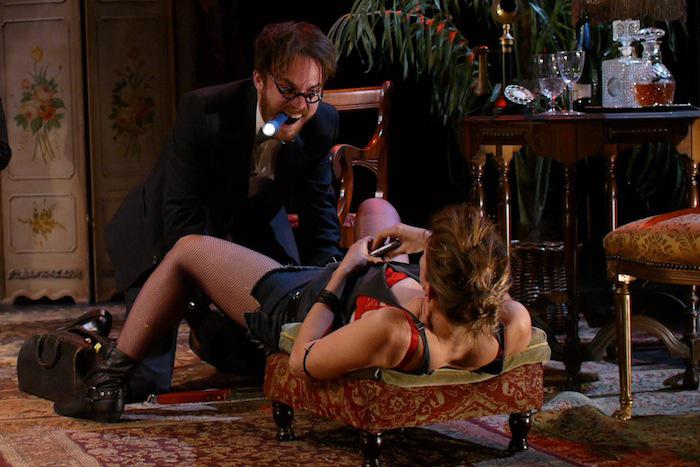
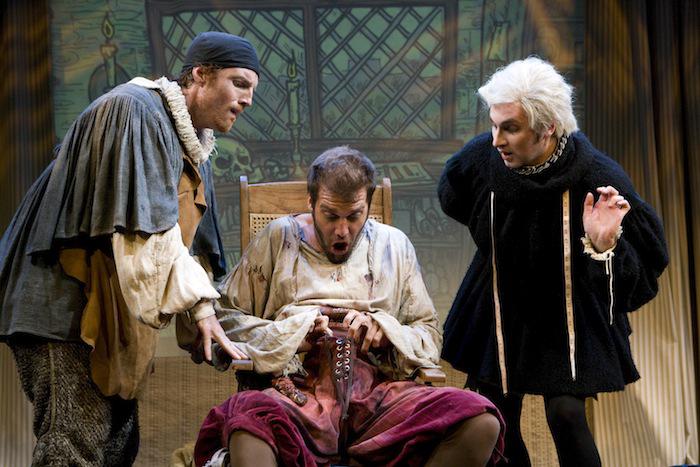
Part IV: So Long, Farewell, Auf Wiedersehn, Goodbye
By Moritz von Stuelpnagel
Companies come and go all the time. Most don’t last more than seven years. So what would it mean if smaller entities actually embraced their transient nature? A small company can be flexible and responsive to the world around them to a degree that larger institutions, that are beholden to subscribers and season planning, cannot. Sure, for a young collective to adopt a specific, targeted mission might mean their purpose will one day expire. But in the meantime, they may make a valuable and provocative contribution to a larger conversation within the industry.
Studio 42 carved out a niche that emerged from a number of frustrated barroom conversations our artists were having. The industry at large had left underserved a subset of work about which we felt passionate. And because there was a gap in the market, we could fill it. Our agenda was clear, and it allowed us to poke and prod a larger argument. But as the conversation shifts, a new argument may be necessary.



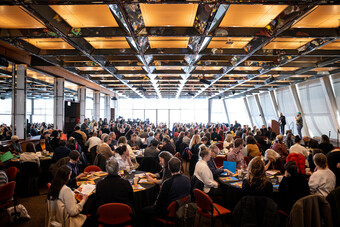

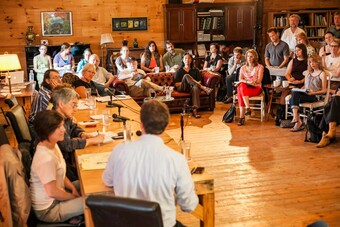


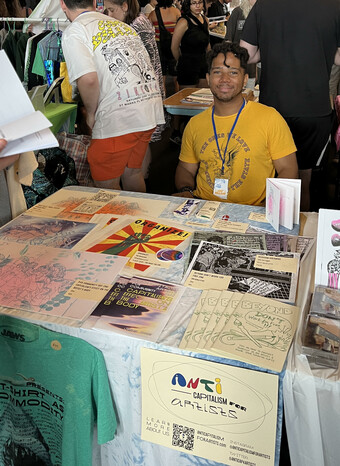

Comments
The article is just the start of the conversation—we want to know what you think about this subject, too! HowlRound is a space for knowledge-sharing, and we welcome spirited, thoughtful, and on-topic dialogue. Find our full comments policy here